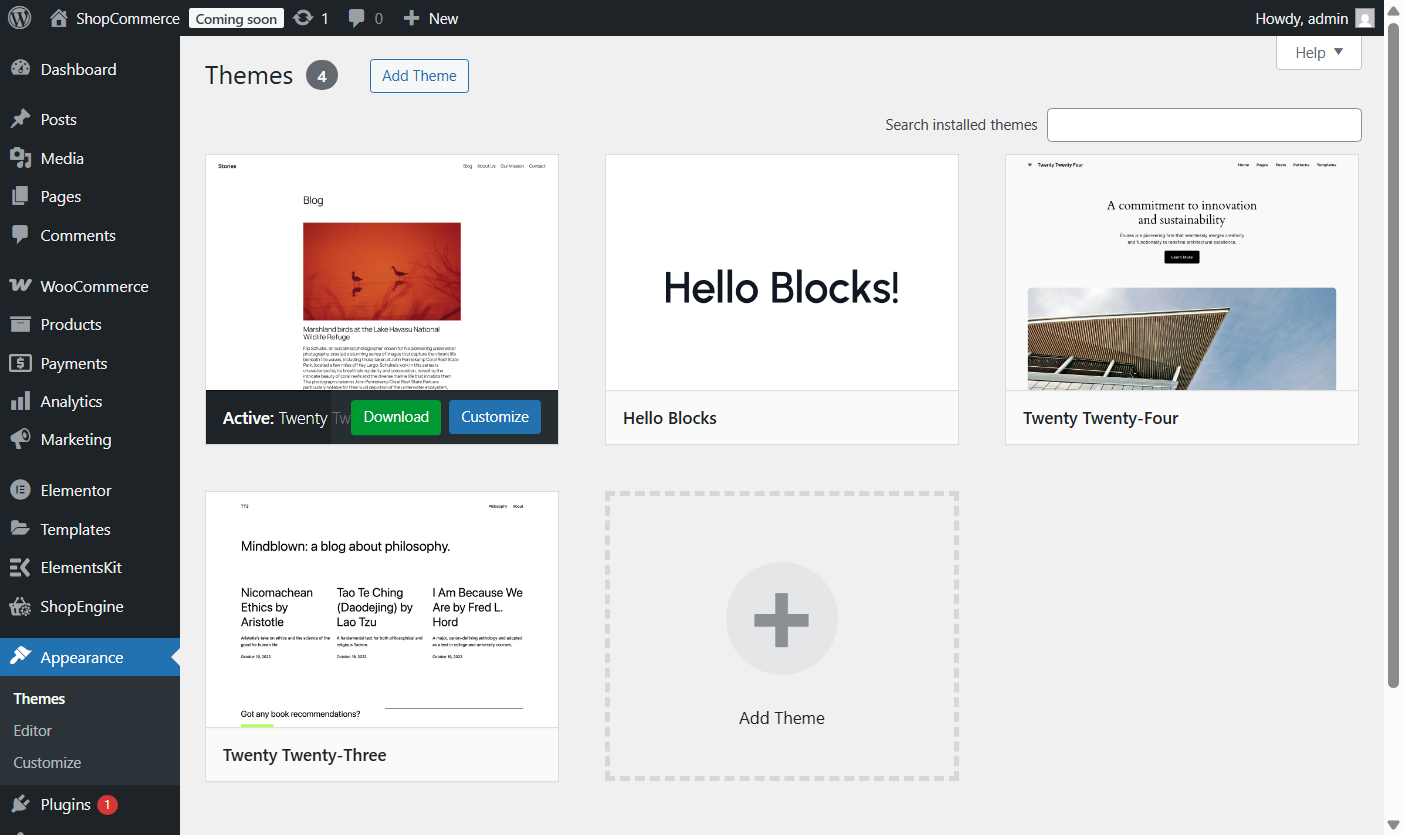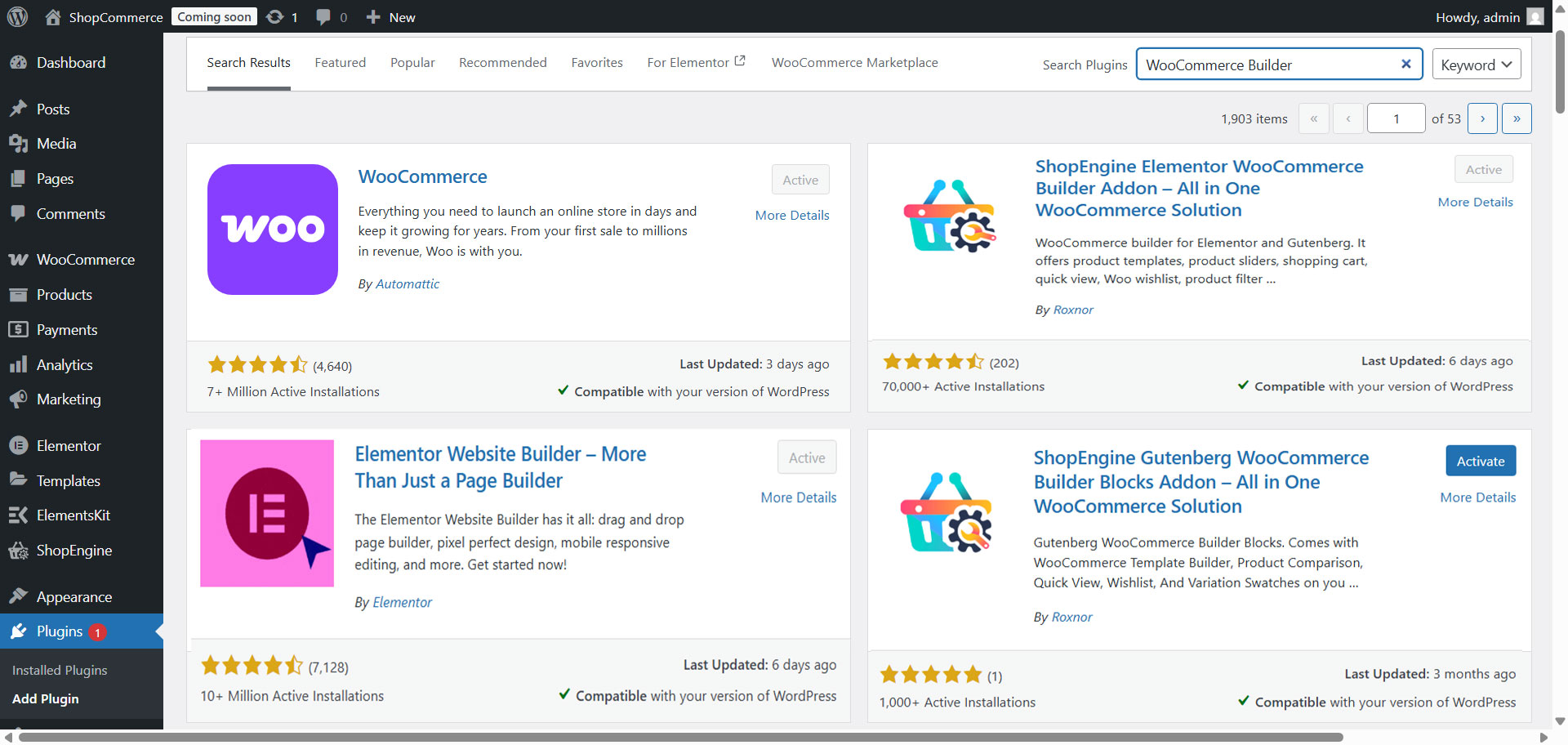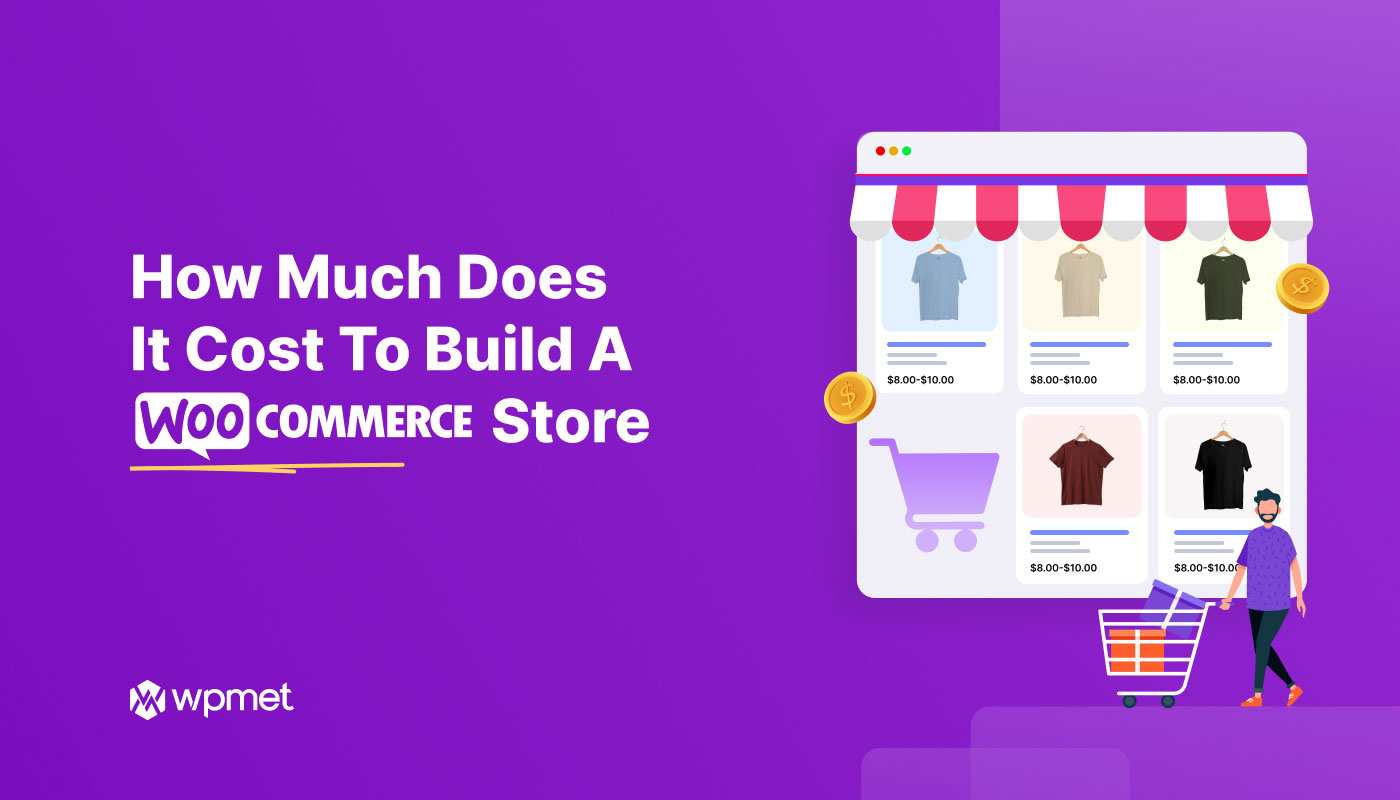The plan to start or shift your business online starts with a single, crucial question: How much does it cost to build an e-commerce website?
Unlike all-inclusive e-commerce platforms like Shopify, WooCommerce is an open-source, free WordPress plugin. This gives you unparalleled flexibility and control, but it also means the WooCommerce website development cost isn’t a single, fixed number.
From a startup to a massive, custom-built enterprise, your final budget can vary wildly. In this article, we break down the true cost of WooCommerce, covering all the mandatory and optional expenses, and even provide a side-by-side cost comparison to help you budget for your new e-commerce venture.
Overview: Total cost of building a WooCommerce website
| Tier | Initial setup cost | Recurring annual cost | Who is it for? |
|---|---|---|---|
| Basic (Startup) | $100 to $500 | $100 to $400 | New businesses, hobby stores, and minimal product catalogs. Uses shared hosting, free themes, and free core plugins. |
| Mid-level (Growing) | $500 to $3,000 | $400 to $1,000+ | Businesses looking to scale. Uses premium hosting, a high-quality premium theme, and 2-5 essential premium plugins. |
| High-end (Enterprise/Custom) | $5,000 to $20,000+ | $1,500 to $5,000+ | Large-scale stores, unique functionality, and custom design. Requires powerful hosting (VPS/Cloud) and extensive developer time. |
To answer “How much does it cost to build an eCommerce website?”, we have categorized the WooCommerce websites into three segments. The above table show three generalized budget tiers:
Factors that affect the cost of a WooCommerce store
The final price tag for your WooCommerce store is a sum of strategic choices. Understanding these factors is the first step to accurately estimating your WooCommerce website development cost.
Business size and goal
A small business selling 10 handmade products has vastly different needs than an international brand with thousands of SKUs.
- Startups / small businesses (Beginner): Minimal investment, relying mostly on free tools and basic hosting.
- Growing businesses (Mid-level): Requires better hosting, a premium theme, and specialized paid plugins for features like advanced shipping or subscriptions.
- Enterprise (Large scale): Needs dedicated hosting, custom development, and complex integrations like ERP or CRM systems, leading to the highest WooCommerce website maintenance costs and development expenses.
Store design and customization
The look and feel of your store directly impacts the cost. Often being the variable expense, the choice you make here will determine the level of uniqueness, functionality, and future flexibility of your online shop.
- Free/Basic Theme: Minimal design cost, but severely limited in unique design and often requires multiple extra plugins for functionality.
- Premium Theme: Professional look and built-in features, but you are still using a non-unique, pre-made template.
- Custom Design: For a unique brand identity and specialized functionality, but with the highest initial investment.
- Page builder tools/ plugins: A flexible hybrid approach that allows for code-free, custom layouts for core shop pages (e.g., Cart, Checkout) without the cost of a full custom theme.
Ongoing maintenance
This is one of the most overlooked recurring costs. A professional site requires constant updates to the core WordPress software, WooCommerce, themes, and plugins. It also includes:
- Security monitoring and firewalls
- Regular backups
- Performance optimization (caching)
Marketing scale and budget
The money you spend on traffic generation is a critical part of the total project budget. A higher budget for paid search (WooCommerce ads) or social media advertising will inflate your overall expenses, but it is crucial for growth.
Core WooCommerce website development cost
This is the absolute minimum investment required to get your store online. This is how much a WooCommerce site costs before any advanced features are added.
| Component | Cost (Annual Estimate) | Notes |
|---|---|---|
| WordPress-CMS | $0 (Free) | The open source platform. |
| WooCommerce-Plugin | $0 (Free) | The core WooCommerce plugin is free to use. |
| Domain Name | $10 – $20 / year | Your store’s address (e.g., mystore.com). Often costs less for the first year. Charges may increase in the following years |
| Hosting Plan | $36 – $300 / year (Shared) | Essential for storing your website files. Costs rise with traffic/scale. |
| SSL-Zertifikat | $0 – $65 / year | Encrypts data for secure transactions. Most hosts include a free SSL (e.g., Let’s Encrypt). |
| Total Minimum Annual Cost | $46 – $385 / year | This is the starting price for a basic store. |
Price of WordPress themes
The theme builds the base of your online store design. It sets the tone of your website’s style and the curb appeal. Basically, the storefront that makes a customer decide, “Yes, I’m going in!”
Based on the use case and budget, we have categorized the WooCommerce theme costing into three main options.
For the starters – Free themes ($0):
If you’re operating on a tight budget, you can absolutely start with free themes. These are the workhorses of the theme world, with reliability and basic features. Great for a tight budget, but customization requires more work.
Think of these as a clean, sturdy, but very empty room. They give you the essential structure you need to display products and process orders. So you are likely to need to spend extra time wrestling with settings, installing multiple plugins, or even tweaking some code to make them look remotely unique or sophisticated.
Beispiel: Hallo Elementor, WordPress’s Twenty Twenty Five theme, etc.
For Professionals – Premium Themes ($60 to $320, yearly or one-time fee)
This is an optimal option for almost every growing business. You are paying a reasonable fee to bypass a huge amount of headache and get instant credibility.
These are professional, polished, and sales-optimized right out of the box. The developers have already spent hundreds of hours perfecting the layouts for speed, mobile responsiveness, and high conversion. Therefore, you can quickly kick-start to start building your site.
Themes like WP Astra come with premium features, starting at $69 /year.

For Enterprise Businesses – Custom Theme ($1,000 to $5,000+)
This one is for the established brand, the complex business, or the entrepreneur who absolutely needs a design that singles out their brand identity.
In this process, you hire a pro developer or agency to build your theme from the ground up, tailored exactly to your unique brand identity and functional needs.
As a result, you get a lightning-fast, highly specialized site where every button, every interaction, and every visual element is built to hit your specific goals. It’s the highest price tag, but it results in the ultimate level of performance and distinction. Custom theme is a digital storefront that simply can’t be found anywhere else.
Finden Sie die Am besten bewertete WooCommerce-Themes zum Aufbau Ihres Online-Shops
Tipps: If you are a beginner or a start-up, go for a free theme. Instead, get a premium plugin that comes with professionally designed templates along with advanced features.
This way, you can upgrade the functionalities and looks of your store simultaneously.
Cost of WooCommerce plugins and extensions
This is where the cost of a WooCommerce store can start to climb if you don’t pick your plugin smartly.
While the core WooCommerce platform is free, to implement advanced features and specific functionalities, you will need plugins (one or multiple), which are often premium.
These paid WooCommerce add-ons are the necessary investment to transform a basic online store into a professional, high-converting e-commerce business.
For a premium WooCommerce plugin, look for the following features:
- Custom Page Building: Offers the option to customize core WooCommerce pages, including the Shop page, Single Product, Cart, Checkout, and My Account dashboard.
- Conversion Modules: Advanced features like Product Pre-Order, Flash Sale Countdown, Quick Checkout, and Sales Notification pop-ups to boost urgency and revenue.
- User Experience: Modules include Product Comparison, interactive Variation Swatches (for colors, sizes, etc.), a Product Quick View, a Product Wishlist, and a Currency Switcher, all designed to serve a global audience.

Tip for cost-effectiveness
You can manage costs and minimize plugin conflicts by choosing a single premium plugin that can replace the need for multiple, individual extensions, offering significant value by bundling all the necessary and advanced features.
For example, plugins like ShopEngine fall into this category, acting as a complete WooCommerce builder for page editors like Elementor.
Tools like ShopEngine’s yearly license plan start at $59, while you can pay at least $134 one time to get lifetime access.
Budget for marketing campaigns
The marketing budget is an operational expense separate from the initial website development cost, but essential for the growth of your WooCommerce store.
You can build the most beautiful, functional, fast WooCommerce site, but if no one knows it exists, you have just built an empty digital store with zero customers. Here’s the thing that trips up a lot of new store owners. And that’s where marketing comes in to rescue.
Marketing costs in WooCommerce are completely flexible. You get to decide how much you spend, and when you spend. But finding the right balance is crucial if you want to run a profitable sale campaign in WooCommerce.
Overspending can quickly drain your budget and reduce profit margins, while underspending limits your reach and barely anyone sees your offer.
Let’s break down the main approaches of marketing campaigns:
Organic content marketing (The long-term approach)
This strategy is all about earning traffic naturally by providing value. It’s a slow burn, but the results are durable and often have a higher return on investment (ROI) over time.
For content marketing, you can either take a full do-it-yourself approach or turn to professionals.
✔️ The Professional Approach: You hire a freelance SEO specialist or a content marketing agency. They handle everything from content planning, writing, to SEO steps and potentially even link building.
Cost: $500 – $2,000+ / month. This cost covers expertise. If you are going for professionals, make sure you spend it in the right way. New businesses often go for a freelance writer who just writes content, instead of going for an agency or content strategist who will provide a well-structured content plan for your business.
✔️ The DIY Approach: Alternatively, you can focus on creating high-quality blog content, detailed product guides, and optimizing your site for search engines (SEO). You spend time learning keyword research and on-page optimization.
Cost: Free (Your Time). The price is paid in hours and effort, which can be significant.
PLUS, try A.I. (Artificial Intelligence) based tools, which will provide the content and SEO solution for your website. Tools like Holen Sie sich Genie AI usually cost from $5 to $90 per month based on your usage.
Paid advertising (The instant switch)
For instant traffic and sells, paid advertising is the answer. This is the most flexible part of your budget, as you can literally turn the tap on or off instantly.
💸 Ad Spend (The Budget): This is the money that goes directly to the platform (Google, Facebook, Instagram, TikTok) to show your ads. This is fully customizable based on your scale. You can start small, test, and then scale up successful campaigns.
Cost: $200 – $5,000+ / month. A small store might test the waters with $5-$10 per day, while an established brand might spend tens of thousands.
💸 Ad Management (The Expertise): Running successful ads is complex; it requires testing different audiences, copy, and creative. You might decide to hire someone to manage the campaigns for you.
Cost: 10–20% of your ad budget, or a flat $500 – $1,000/month retainer for an agency or freelancer. You’re paying for their expertise to make sure your $5,000 ad budget isn’t just thrown away on ineffective campaigns.
Tipps: You should always factor in at least a minimal marketing budget. The smartest approach is usually a hybrid: invest a small amount of money into high-intent Google Ads while dedicating time (or a small budget) to quality organic content that builds long-term authority.

WooCommerce website maintenance costs
Maintenance is the recurring operational expense that ensures your site remains fast, secure, and functional. Neglecting these tasks can lead to security breaches, slow performance, and lost sales. Here is a quick overview of your WooCommerce website maintenance component:
Hosting plan & domain renewal
The core infrastructure cost. This renews your domain name and provides the server resources (speed, storage, bandwidth) necessary to run an e-commerce store.
Cost: $120 – $2,400+ per year
Shared hosting for a small store might be $5–$25/month. Managed WooCommerce Hosting (recommended for performance and security) is higher, often $30–$200+/month. Domain renewal is typically $15–$60/year.
Security & SSL certificate
Essential for protecting sensitive customer and payment data. Includes the cost of a Web Application Firewall (WAF), malware scanning, and the SSL certificate (which encrypts data).
Cost: $0 – $300 per year
Many quality hosts include a basic Free SSL (Let’s Encrypt). Premium security plugins like Wordfence or Sucuri offer advanced features (real-time threat detection, advanced firewalls) for $50–$200/year or more.
Backup & recovery
Automated, off-site backups are the only way to recover quickly from a critical error, malicious hack, or failed update. Backups must be stored separately from your main server.
Cost: $0 – $120 per year
Some hosts offer daily backups for free. Dedicated premium backup services (e.g., Jetpack VaultPress or BlogVault) provide more control, one-click restoration, and off-site storage for $5–$10/month.
Premium themes & plugins
Licenses for professional themes and extensions (e.g., advanced filtering, subscriptions, CRM integration, and advanced SEO tools) that require regular updates and support.
Cost: $100 – $600+ per year
WooCommerce itself is free, but crucial premium extensions often cost $49 – $199+ annually per license to receive security patches and feature updates.
The rest depends on the sectors like marketing campaign, professionals you hire, and miscellaneous costs.

Tips for building a budget-friendly WooCommerce website
You can significantly lower the WooCommerce website development cost by adopting a lean, strategic approach:
- Domain and Hosting: Purchase a long-term shared hosting plan (3-4 years) with a reputable provider. This typically offers the lowest monthly rate and often includes a Free SSL certificate and a free domain name for the first year.
- Use a free theme: Stick to a reliable, lightweight free theme like Hello (for Elementor) or a default theme like Twenty Twenty-Five (for Gutenberg). They are fast and provide a solid foundation.
- Use the free version of WooCommerce: The core plugin is capable enough for all basic selling functions.
- Get a single premium plugin: Instead of buying multiple separate plugins, look for all-in-one solutions that add and enhance WooCommerce functionality without the recurring cost of multiple licenses. (e.g., ShopEngine).
- Focus on organic content marketing: Dedicate time to blogging and SEO to drive free traffic, eliminating the need for a large marketing ad budget.
- Spend marketing ad budget smartly: If you must use ads, start with small, highly targeted campaigns to test conversion rates before committing to a larger budget.
Einpacken
The cost to build a WooCommerce store is not fixed, but rather a strategic investment based on your business needs. It all depends on how you want to scale your online store.
Based on the costing analysis breakdown we just discussed, shape your budget that matches your goals, scale, and growth plans.
The smartest approach is to spend where it truly matters: site performance, user experience, and conversions.
Whether you’re just launching your first store or growing an established brand, WooCommerce gives you full control over your costs.
The key is to plan smart, use reliable tools lto cut unnecessary spending, and invest steadily in marketing that brings real results. With the right balance, your store won’t just stay affordable; it’ll keep turning a profit and stand strong for the long run.



Schreibe einen Kommentar